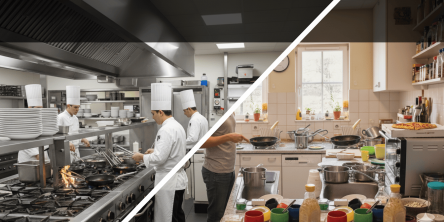Explore the Versatility & Uses of a Plastic Water Tank

A plastic water tank is an indispensable resource for residential, commercial, and agricultural applications. Known for their durability and adaptability, these tanks offer efficient water storage solutions that cater to diverse needs. As the demand for sustainable and cost-effective water storage grows, water tank suppliers continually improve their offerings, making plastic tanks an ideal choice for many households and industries. Let’s dive into their versatility and uses.
1. Understanding Plastic Water Tanks
Plastic water tanks are storage containers made from high-quality polyethylene or other plastic materials. Their primary purpose is to store water safely for various needs, including drinking, cleaning, and irrigation. They come in a wide range of shapes, sizes, and capacities, ensuring they meet the unique requirements of different users.
Plastic tanks are lightweight, resistant to corrosion, and easy to install, making them a favorite for both residential and industrial settings. They also provide excellent UV resistance, ensuring longevity even in harsh outdoor conditions.
2. Versatile Applications of Plastic Water Tanks
Residential Use
In homes, plastic tanks are commonly used for storing water for daily consumption. They are available in various sizes, making them ideal for families of all sizes. A plastic water tank ensures a reliable water supply for cooking, bathing, cleaning, and gardening.
Agricultural Applications
For farmers, plastic tanks are crucial for irrigation. They can store rainwater or other sources of water to irrigate crops during dry seasons. Their lightweight design allows easy relocation, especially in large agricultural fields.
Industrial Use
Industries often require water for manufacturing processes. Plastic tanks are preferred in industrial settings due to their resistance to chemicals and ability to store large volumes of water without corroding.
Rainwater Harvesting
Plastic tanks are perfect for rainwater harvesting systems. They can collect and store rainwater effectively, helping conserve water and reduce dependency on municipal supplies.
3. Key Benefits of Plastic Water Tanks
Durability and Longevity
Plastic tanks are built to last. Made from durable materials, they resist environmental wear and tear, ensuring long-term performance.
Lightweight and Easy to Install
Unlike metal or concrete tanks, plastic tanks are lightweight and easy to transport and install. This feature reduces labor costs and installation time.
Cost-Effective
Compared to alternatives, plastic tanks are more affordable without compromising quality. Their low maintenance requirements also contribute to cost savings over time.
Customizable Sizes and Shapes
Plastic tanks come in a variety of shapes—cylindrical, rectangular, and even slimline designs—to fit any space. Their customizable capacities ensure they meet specific user needs.
Eco-Friendly
Many plastic tanks are made from recyclable materials, reducing their environmental impact. They also promote water conservation through efficient storage solutions.
4. Factors to Consider When Choosing a Plastic Water Tank
Capacity
The tank’s capacity should match your water consumption needs. For example, a small household may require a 500-liter tank, while larger families or industries might need several thousand liters.
Material Quality
Ensure the tank is made from food-grade, BPA-free plastic for safe water storage, especially for drinking purposes.
UV Resistance
Choose tanks with UV protection to ensure longevity when exposed to sunlight.
Space Availability
Consider the available space for installation. Slimline tanks are great for tight spaces, while larger cylindrical tanks suit open areas.
Reliable Supplier
Partner with a trusted water tank supplier who offers high-quality tanks, warranties, and excellent after-sales service.
5. Maintenance Tips for Plastic Water Tanks
Regular maintenance ensures the longevity and efficiency of your water tank. Follow these tips:
Periodic Cleaning: Clean the tank every six months to remove sediment and prevent bacterial growth.
Inspect for Cracks: Check for signs of wear, such as cracks or leaks, and address them promptly.
Secure the Lid: Ensure the tank’s lid is sealed to keep out dirt, insects, and debris.
Install a Filter: Use filters to prevent contaminants from entering the tank during water collection.
Conclusion
A plastic water tank is a versatile and essential solution for water storage in various settings. Whether for residential, agricultural, or industrial use, these tanks provide cost-effective, durable, and eco-friendly water storage options. Choosing the right tank involves considering capacity, material quality, and the reputation of the water tank supplier. With proper maintenance, a plastic tank can serve your needs effectively for many years. Invest in a quality plastic tank today and enjoy uninterrupted water access while promoting sustainability.
Similar Articles
As winter settles in and temperatures drop, families across the country brace themselves for the inevitable spike in energy bills.
Wooden floors have long been the subject of admiration for their classic beauty, natural warmth, and strength.
When it comes to giving your home a fresh coat of paint, most homeowners focus on choosing the perfect color and finish.
The holiday season transforms neighbourhoods into glowing wonderlands, but today's homeowners are moving beyond the traditional approach of simply stringing lights wherever they fit.
City homes face a constant challenge around outdoor space. Gardens are small or nonexistent, balconies are narrow, and any outdoor area feels precious.
Anyone who's worked in a commercial kitchen knows they operate with an efficiency that home kitchens rarely match.
When you want to transform your home with a complete makeover, you must find the best ways to save money. Let's check some cost-saving tips for renovating.
Handrails are one of the few things that merge safety, fashion, and structural importance in a home most naturally when the home is being either designed or renovated.
Cabinets play a vital role in any home, combining function, organization, and aesthetic appeal. Whether in the kitchen, bathroom, or living area, cabinetry defines the layout, storage capacity, and overall look of a space.









